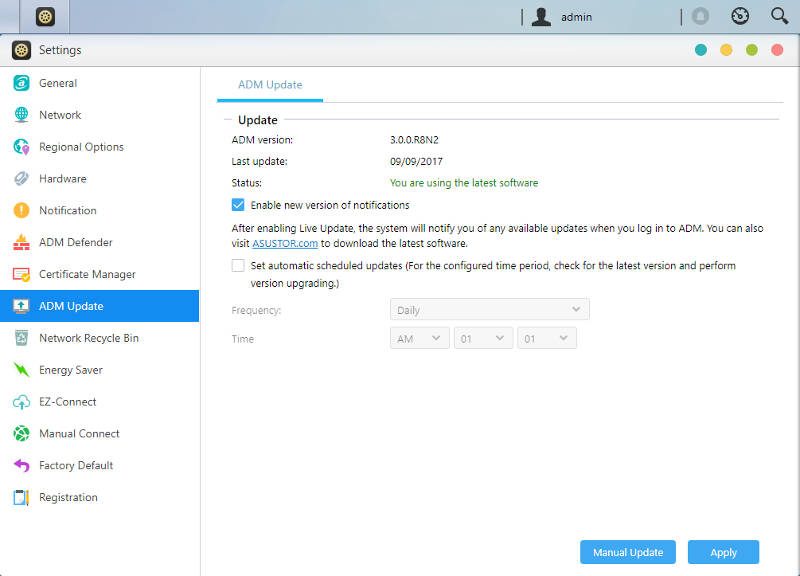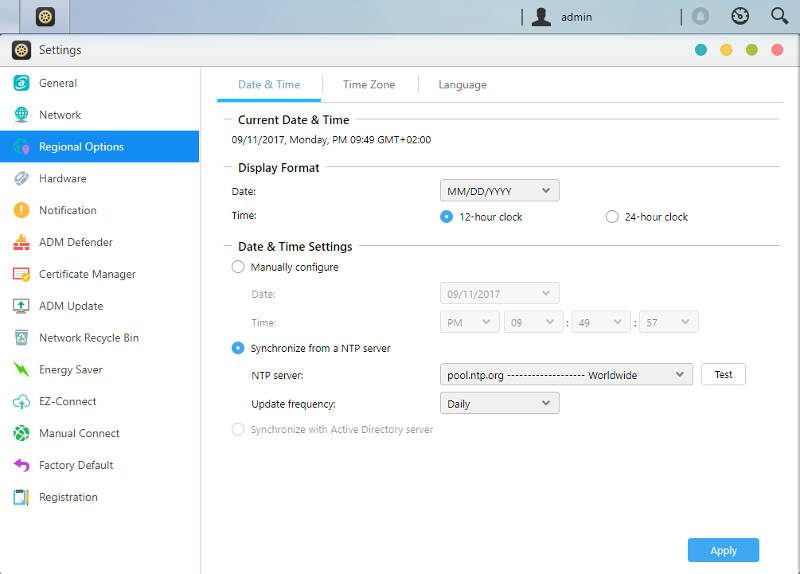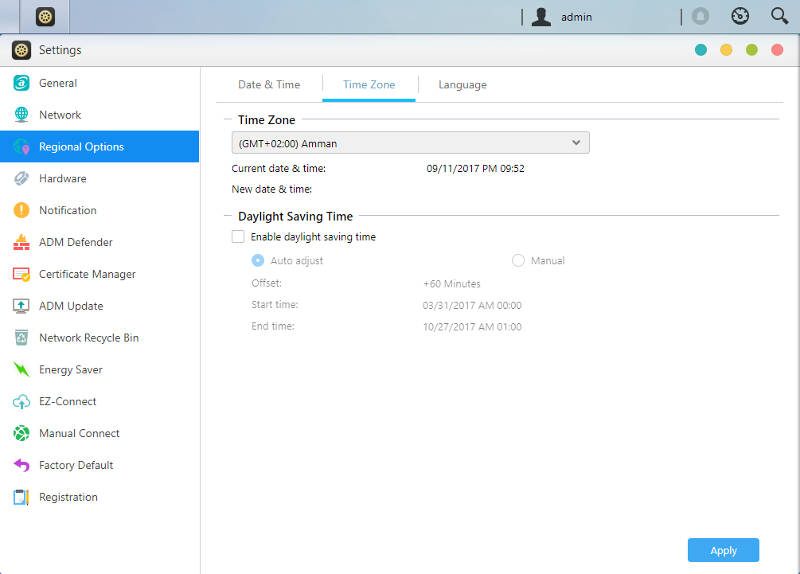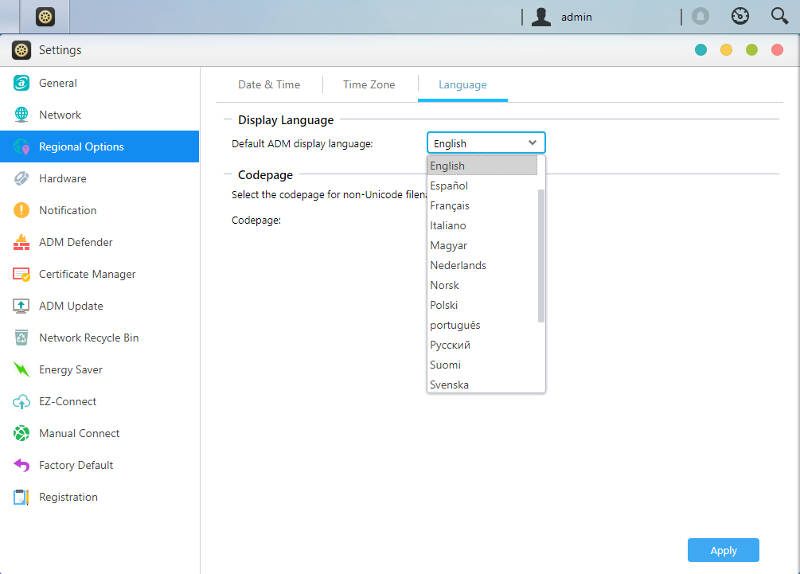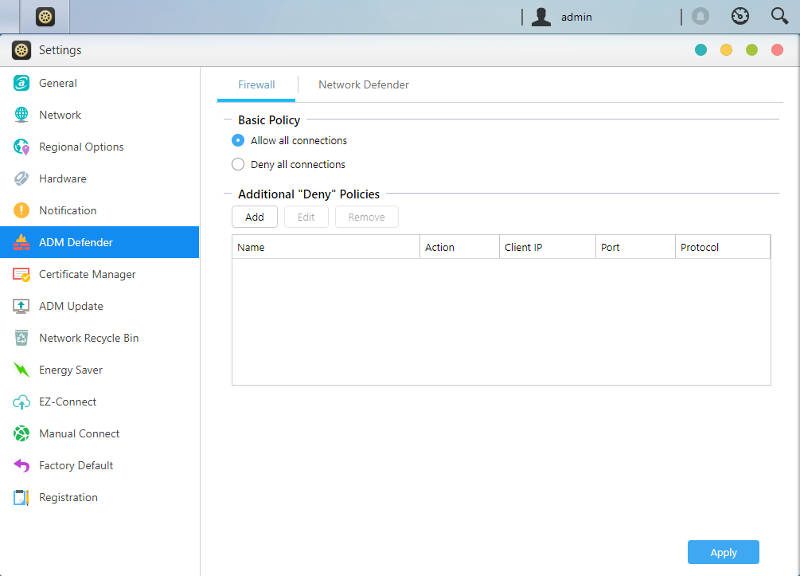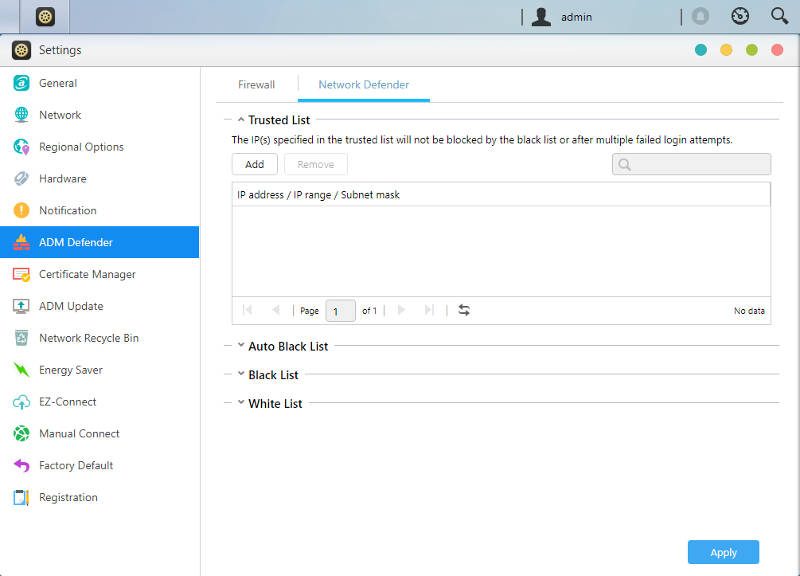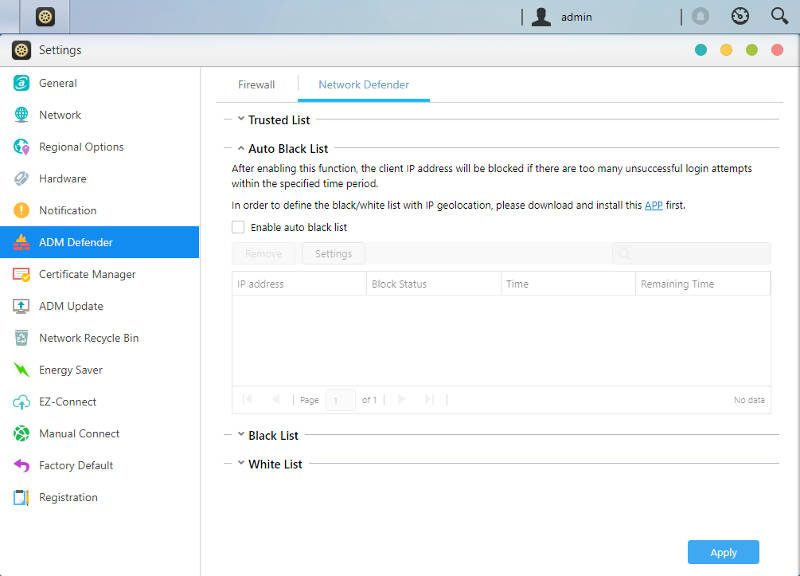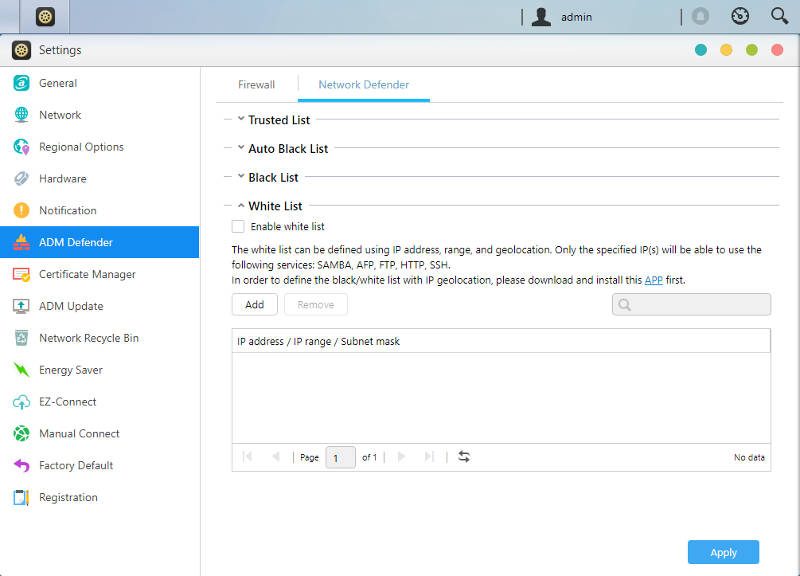ASUSTOR Data Manager (ADM) 3.0 Software Introduction
Bohs Hansen / 7 years ago
NAS Settings – Part 2
For faster page loading, we’ve split up the NAS settings into two pages.
Regional Options
The regional options are some of those settings you’ll only look at once. Once set, you don’t need to worry abou them anymore. Here, you can tell the NAS where in the world it is located in order to set the right time and date. You can also change the language of the user interface here and there are a lot of available languages to chose from.
ADM Defender
The ADM Defender is a basic network security tool. It features a basic Allow-All-Except or Deny-All-Except firewall as well as the network defender. The latter allows you to create black and white lists for possible connections.
EZ-Connect
Now that you’ve set up your ASUSTOR NAS, you’ll want to connect to it. Connections aren’t just made from home these days, but remote connections can be tricky. Few people have static IPs these days, so you need a name instead. There are free and commercial third party DDNS providers for this, but ASUSTOR also has its own. It is free to use and it will allow easy connections to your NAS where ever you are in the world – as long as you got an internet connection at both ends.
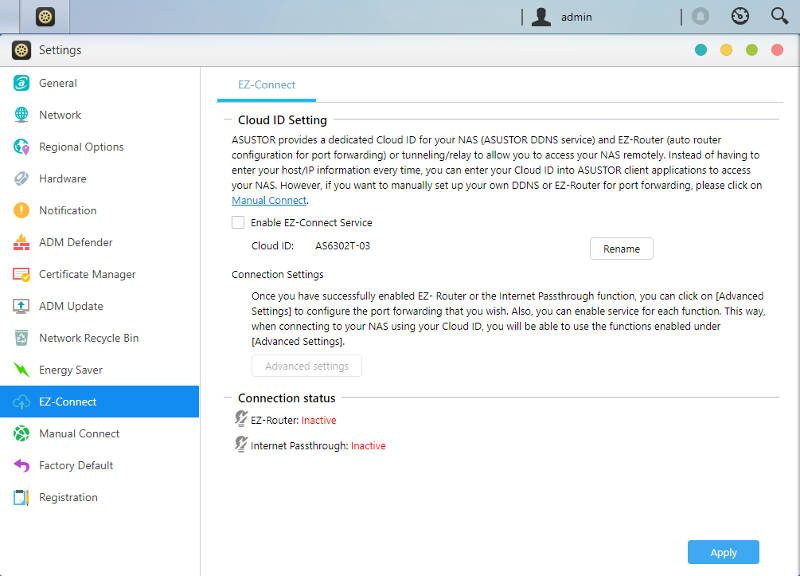
Manual Connect
The Manual Connect part for those who don’t want to use the EZ-Connect. Here you can configure your DDNS provider.
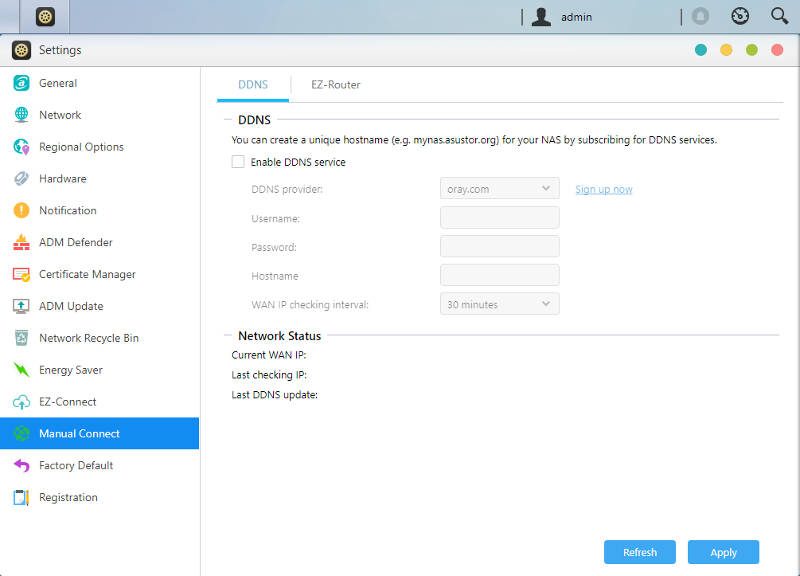
The EZ-Router function can automatically forward ports used by the installed apps and functions. You can also control this manually. It does require the router to have UPnP enabled, else you have to set the port forwards in your router instead.
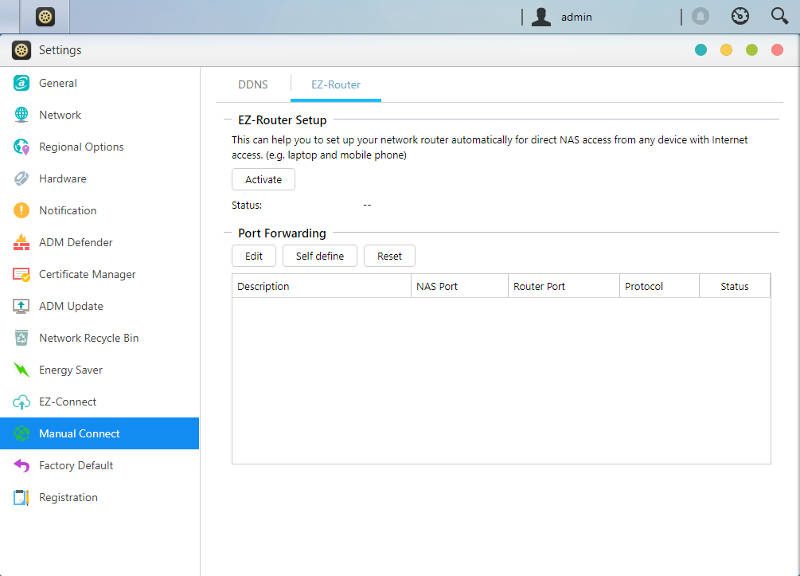
Firmware Management
The last point that I’m showing in this section is probably one of the most important ones. You should always keep your NAS up-to-date. You can do this manually or you can let it happen at a specified time. New updates bring security enhancements, bug fixes, and new functions, so there isn’t a reason not to upgrade.
